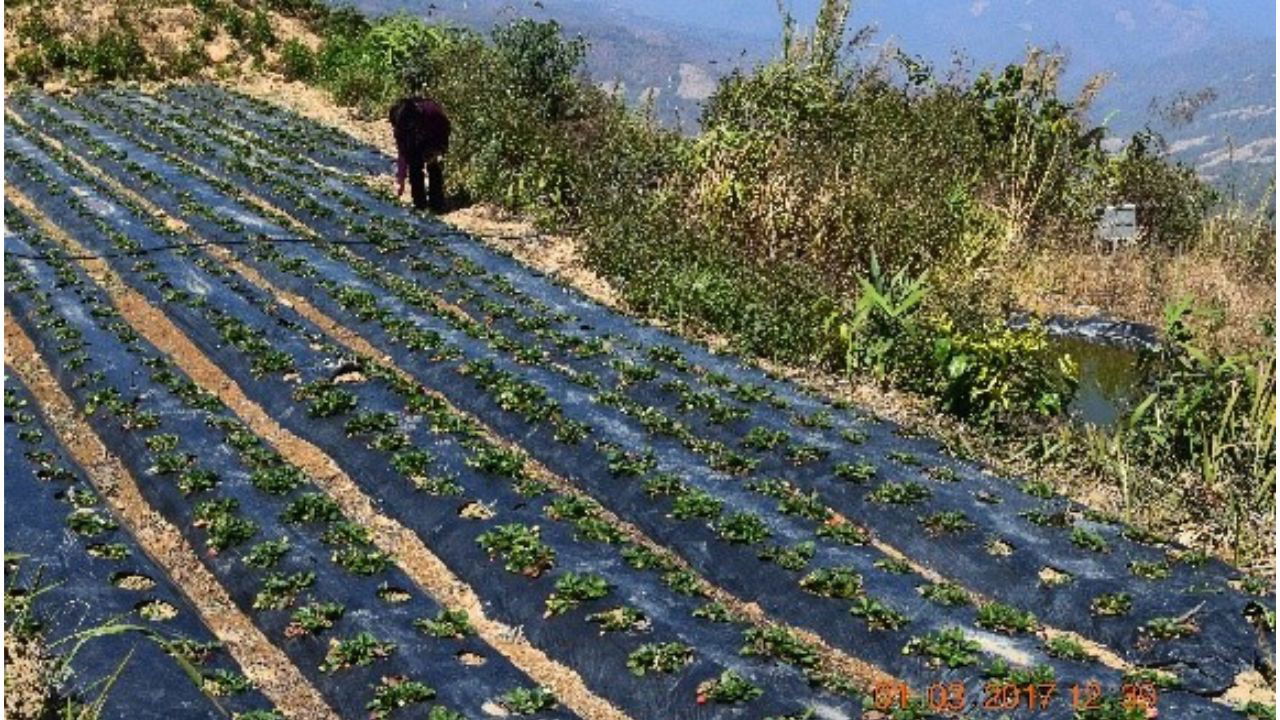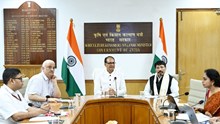
Farmers in Noaotla-III village, Mizoram, have increased their strawberry production by using ICT technologies in the management of pest and diseases. Farmers are in direct contact with agricultural experts through WhatsApp and are able to manage their crops based on the expert advice. In similar way, farmers are also being trained about expert systems, DSS, databases, Mobile Apps and other modern technologies so that they can more efficiently manage their crops at the difficult situations. More than 50% of the farmers cultivates strawberry in the village and also have access to smart phones.
Thus, reports on the performance of their crops could be directly updated to KVK through WhatsApp groups. Mobile Advisory Services have also reached the farmers in this village which is very useful for them in being able to take proper pest and disease management practices in appropriate time by getting direct advice from concerned Scientists from different fields.
A study was also conducted and the study highlights the successful implementation of Integrated Pest Management techniques in Noaotla-III village, Mizoram, to combat insect pests affecting strawberry crops.
Fragaria, a genus within the Rosaceae family, encompasses over 20 species of flowering plants and their delicious, edible fruit. Originating in the temperate regions of the Northern Hemisphere, strawberries have been cultivated worldwide for centuries. The modern, large-fruited strawberry emerged in Europe during the 18th century. Since then, various countries have developed their own cultivars tailored to specific climatic conditions, day lengths, altitudes and production needs. Strawberries are cultivated for both fresh consumption and processing into frozen, canned, preserved, or juiced products. Due to their perishable nature and the challenges of mechanical harvesting, strawberry production is typically concentrated near consumption or processing centres with adequate labour. Hand-picking remains the primary method for harvesting strawberries.
KVK- Siaha in the state of Mizoram introduced strawberry cultivation in 2010 and the positive results encouraged local farmers to adopt the practice. However, in 2017, a mass destruction of strawberry crops occurred due to root weevils and other minor pests. But the researchers at the KVK developed different modules to address the Pest problem. Through IPM and expert guidance, farmers have been able to manage pests effectively and sustain strawberry production in the region.
Demonstration
Method Demonstration on soil treatment, seedling treatment and foliar application at Farmers’ Fields starting from end of July to beginning of August.2017. In most cases, 90% of the strawberry crop were already infested and damaged by root weevils. The average pest incidence of white grub was 15nos. white grubs per 10plants and 7nos. of root weevil per 10 plants. The average infestation percent of white grub was 68% and average infestation percent of root weevil was 64%.
Whatever was left of the planting materials were collected and treated with Copper Oxychloride as seedling treatment @ 500g/200 litres of water per acre and soil treatment was done by Carbofuran 3G or Phorate 10 G @ 1.5kg ai/ha. Later on, seedling treatment was again done by Mancozeb 75% WP @ 200-250g/100 litres of water. These treated planting materials were cultivated on a small scale for mother block in a new plot of land.
Crops like cabbage, green peas and onion were cultivated in these strawberry fields as crop rotation in the year 2019 - 2020. Mass cultivation of strawberry in the old fields started from June, 2021 onwards and is showing good results. Meanwhile, cultivation of strawberry still continues in new plot of land where pest infestation through soil is not heavy with proper Pest Management modules being conducted.

Technologies Demonstrated and Results:
|
Technology demonstrated |
Demonstra-tion Yield |
Yield of Local Check |
% of increase in yield |
Gross cost (Rs./ha) |
Gross return (Rs./ha) |
Net return (Rs./ha) |
BC ratio |
|
|||||||
|
1. Soil treatment using Carbofuran 3G or Phorate 10 G @ 1.5kg ai/ha).
2. Treatment of planting materials with Copper Oxychloride as seedling treatment @ 500g/200 litres of water.
3. Plant treatment by Mancozeb 75% WP @ 200-250g/100 litres of water. |
60 |
51 |
17.64% |
2,20,000 |
6,00,000 |
3,80,000 |
2.72 |
||||||||
|
Farmer’s Practice (No IPM)
|
2,10,000 |
5,10,000 |
3,00,000 |
2.42 |
|||||||||||
After a severe pest outbreak in 2017, KVK Siaha implemented IPM strategies to revitalize strawberry cultivation in Noaotla-III village. These strategies included soil and seedling treatments, as well as crop rotation to reduce pest populations. While the 2017-2018 season was used for soil solarisation and alternative crops, strawberry cultivation resumed in 2021 with promising results. By following Pest Management strategies, farmers have successfully managed pests and maintained a consistent supply of strawberries.
The efforts of KVK Siaha and ICAR-NCIPM have yield to impressive results. The strawberry crops in Noaotla-III have recovered from the pest infestation and are now thriving since then. Farmers are reaping the benefits of increased yields and higher incomes. The successful implementation of Pest Management strategies and the effective use of ICT have transformed this remote village into a model of sustainable agriculture. The KVK's initiative has not only saved the strawberry crop but has also paved the way for a brighter future for the village farmers.













Share your comments